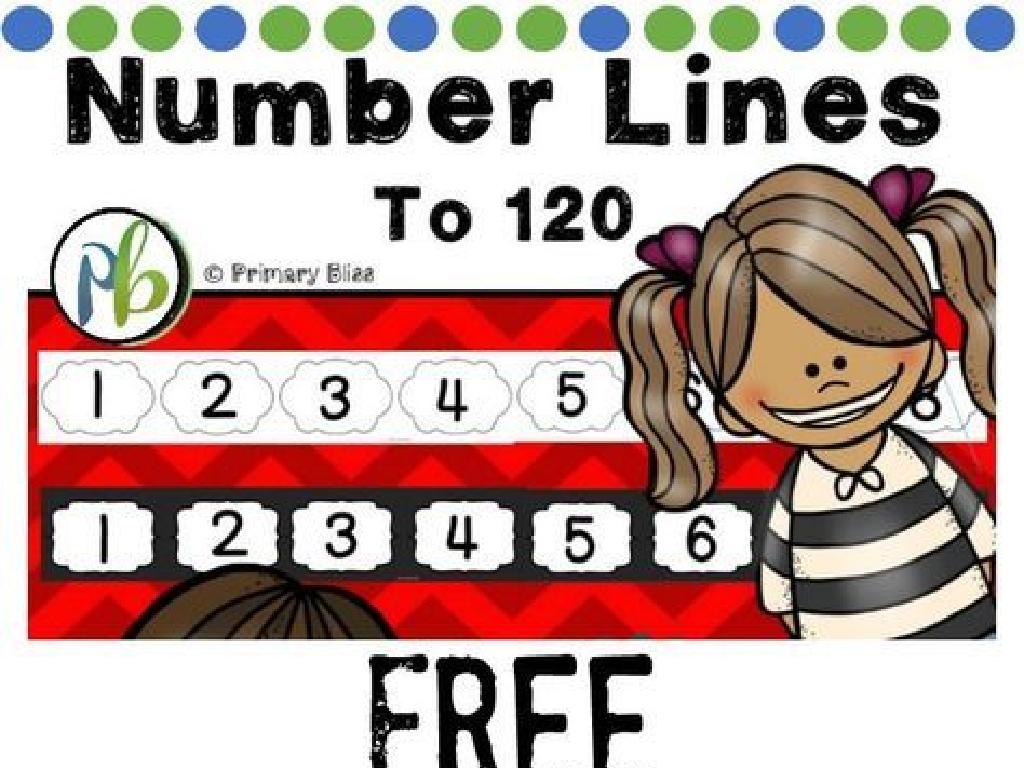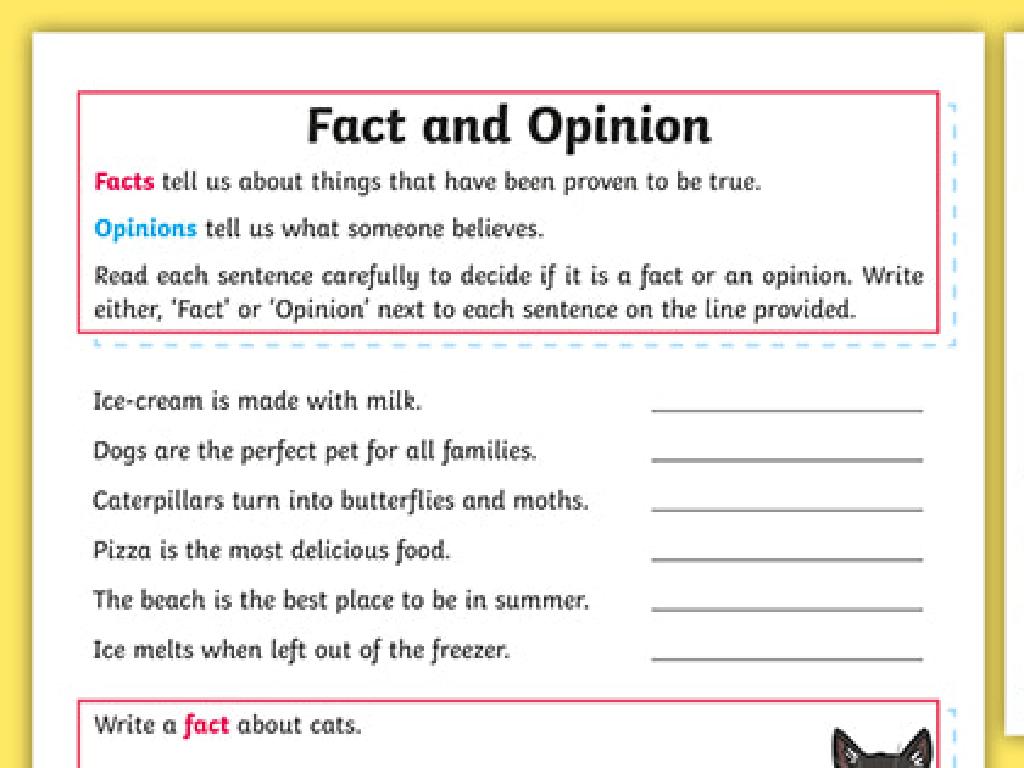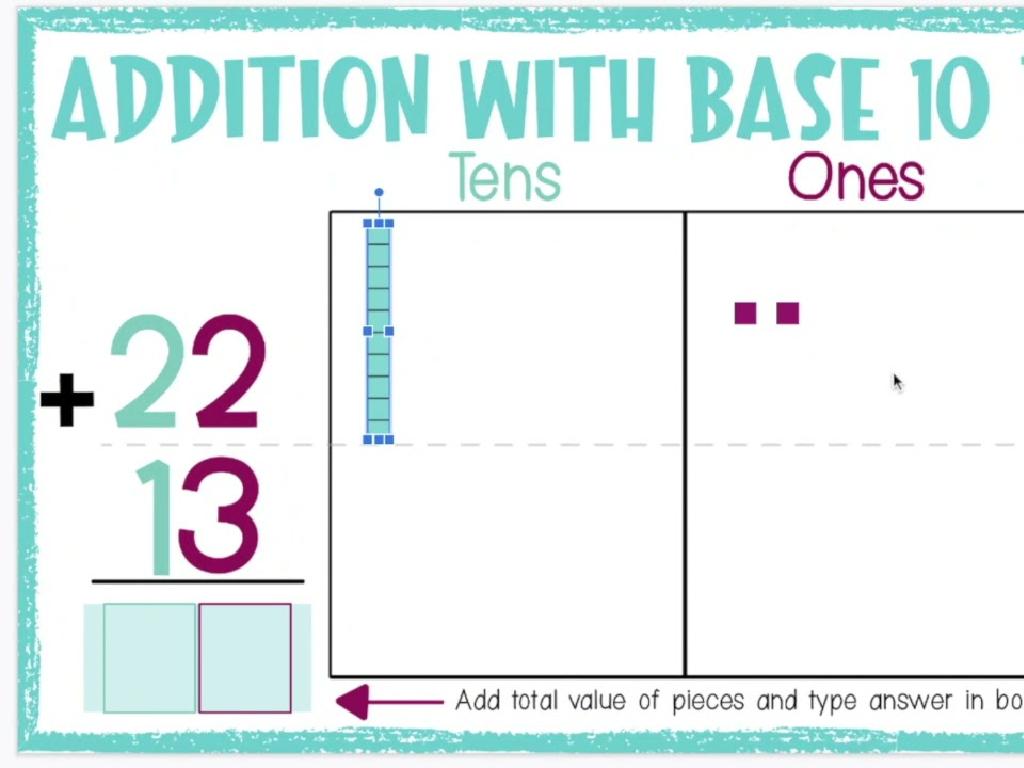Irregular Past Tense: Review
Subject: Language arts
Grade: Seventh grade
Topic: Verb Tense And Mood
Please LOG IN to download the presentation. Access is available to registered users only.
View More Content
Welcome to Irregular Past Tense Verbs!
– Grasping verb tenses
– Verb tenses indicate the time of action or state of being.
– Defining irregular verbs
– Irregular verbs don’t follow standard -ed ending.
– Significance of irregular verbs
– They are crucial for correct sentence construction.
– Irregular verbs in English
– Examples: go-went, buy-bought, fly-flew.
|
This slide introduces the concept of irregular past tense verbs, which are a key component of English grammar. Start by explaining verb tenses and their role in indicating when an action occurs. Then, define irregular verbs as those that do not conform to the typical pattern of adding -ed to form the past tense. Discuss why mastering irregular verbs is important for students to construct sentences accurately and to express past events correctly. Provide common examples of irregular verbs and their past tense forms to illustrate the concept. Encourage students to think of more examples and use them in sentences to reinforce their understanding.
Regular vs. Irregular Verbs
– Recap: What are regular verbs?
– Regular verbs end with ‘ed’ in past tense
– Understanding irregular verbs
– Irregular verbs don’t follow a set pattern
– Comparing examples: Regular vs. Irregular
– ‘Walk’ becomes ‘walked’, but ‘go’ becomes ‘went’
– Practice with both verb types
|
Begin with a quick review of regular verbs, emphasizing the ‘ed’ ending in the past tense. Then, define irregular verbs, highlighting their lack of pattern, which makes them challenging to learn. Provide clear examples of both regular and irregular verbs to illustrate the difference. ‘Walk’ and ‘walked’ show a regular verb pattern, whereas ‘go’ and ‘went’ demonstrate an irregular change. Encourage students to think of more examples and to practice by writing sentences using both types of verbs to reinforce their understanding. This slide aims to solidify the students’ grasp of verb types in preparation for more advanced exercises.
Mastering Irregular Past Tense Verbs
– Common irregular verbs list
– ‘Be’ becomes ‘was/were’, ‘begin’ becomes ‘began’
– Patterns in irregular verbs?
– No consistent pattern, e.g., ‘read’ (same), ‘write’ (wrote), ‘drive’ (drove)
– Tips to memorize irregular verbs
– Use flashcards, repetition, and writing exercises
– Practice makes perfect
|
This slide aims to review the concept of irregular past tense verbs, which do not follow the standard ‘-ed’ ending pattern. Start by presenting a list of commonly used irregular verbs. Highlight the lack of a consistent pattern in their past tense forms, using examples like ‘read’, ‘wrote’, and ‘drove’. Offer students memorization strategies such as flashcards, repetition, and writing sentences using these verbs. Emphasize the importance of practice and encourage students to use these verbs in their daily language to enhance retention. Prepare to engage the class with activities that involve identifying and using irregular verbs in sentences.
Irregular Past Tense Verbs
– Irregular verbs don’t use ‘ed’
– Conjugating irregular verbs
– Learn specific changes for each verb
– ‘Go’ changes to ‘Went’
– Example: ‘Go’ does not become ‘Goed’
– Practice with more examples
– Find verbs in a story and change to past tense
|
This slide is focused on teaching students that irregular verbs do not follow the standard ‘ed’ ending rule when forming the past tense. Instead, these verbs must be memorized as they conjugate differently. Start by explaining the concept of irregular verbs with the example of ‘go’ becoming ‘went’. Emphasize that there is no formula for these changes and that practice is essential. Encourage students to think of other irregular verbs they know and how they change in the past tense. Provide a list of common irregular verbs for students to practice with and ask them to find examples in texts they are reading. This will help reinforce their understanding and recognition of irregular verbs in different contexts.
Irregular Verbs in Sentences
– Use irregular verbs in context
– Verbs that don’t follow regular -ed ending for past tense
– Practice constructing sentences
– Create your own sentences using irregular verbs
– Identify irregular verbs in examples
– Find and highlight the irregular verbs in provided sentences
– Understand verb tense consistency
|
This slide aims to reinforce the understanding of irregular verbs within the context of sentence construction. Students will practice using irregular verbs by creating their own sentences, which helps in grasping the concept of how these verbs differ from regular verbs. Additionally, students will identify irregular verbs in example sentences to enhance their recognition skills. Emphasize the importance of verb tense consistency in writing. Provide guidance on how to spot irregular verbs and use them correctly. Encourage students to think about the base form of the verb and its past tense form, which often requires memorization due to the lack of a simple rule.
Tackling Tricky Irregular Verbs
– Irregular verbs overview
– Lie vs. Lay confusion
– ‘Lie’ means to recline; ‘Lay’ requires an object e.g., ‘I lay the book down yesterday.’
– Sit vs. Set differences
– ‘Sit’ means to be seated; ‘Set’ places something somewhere e.g., ‘She set the timer for 5 minutes.’
– Rise vs. Raise clarification
– ‘Rise’ is to get up; ‘Raise’ needs an object e.g., ‘He raised his hand.’
|
This slide focuses on some of the most common irregular verbs that confuse students. Begin by reviewing what irregular verbs are and why they don’t follow the standard -ed ending for past tense. Emphasize the differences between ‘lie’ and ‘lay’, highlighting that ‘lay’ requires an object while ‘lie’ does not. Clarify ‘sit’ versus ‘set’, and ‘rise’ versus ‘raise’, using examples to illustrate their proper use. Encourage students to create sentences using these verbs correctly and to think of other verbs that change form in a similar way. This will help them remember the correct usage through practice and reinforcement.
Interactive Practice: Irregular Past Tense Verbs
– Play ‘Spot the Irregular Verb!’ game
– Take the Interactive Past Tense Quiz
– Choose the correct past tense form of given verbs.
– Group Activity: Story Creation
– Collaborate to write a story using a list of irregular verbs.
– Share stories with the class
– Discuss how different verbs change in the past tense.
|
This slide is designed to engage students in an interactive review of irregular past tense verbs. Begin with a game where students identify irregular verbs from a list. Follow with an interactive quiz to test their knowledge of the correct past tense forms. Then, have students work in groups to create a story incorporating irregular verbs, which they will later share with the class. This activity encourages collaboration and creativity while reinforcing the lesson. As a teacher, facilitate the activities, provide feedback, and ensure each student participates. Possible variations for the story activity could include creating comic strips, writing a short play, or composing a poem using irregular verbs.
Class Activity: Verb Tense Relay
– Form teams for the relay race
– Each team conjugates a verb on the board
– Choose irregular verbs for each team
– Race to finish with correct conjugations
– Fastest team with correct answers wins!
|
This activity is designed to make learning irregular past tense verbs fun and engaging through a competitive relay race. Divide the class into small teams. Each team will take turns writing the past tense of a given irregular verb on the board as quickly as possible. The team that finishes first with all correct answers wins a small prize. Prepare a list of irregular verbs for the activity, ensuring a mix of commonly used and more challenging verbs. Monitor the activity to ensure fair play and correct any mistakes on the spot, providing explanations as needed. This will reinforce their understanding of irregular verbs and encourage teamwork.
Wrapping Up: Irregular Past Tense
– Recap of irregular verbs
– Why master irregular verbs?
– Irregular verbs are common in English and essential for fluent speech and writing.
– Homework: 10 sentences
– Use 10 different irregular verbs in unique sentences.
– Share your sentences next class
– Be prepared to present your sentences and discuss the context of each verb used.
|
As we conclude today’s lesson on irregular past tense verbs, it’s important to review the key points and understand why mastering these verbs is crucial for effective communication in English. For homework, students are tasked with writing 10 sentences, each incorporating a different irregular verb. This exercise will help reinforce their understanding and usage of irregular verbs in various contexts. In the next class, students will have the opportunity to share their sentences, which will allow for peer learning and further discussion on the application of these verbs. Encourage creativity and the use of a diverse range of verbs to ensure a comprehensive review.






